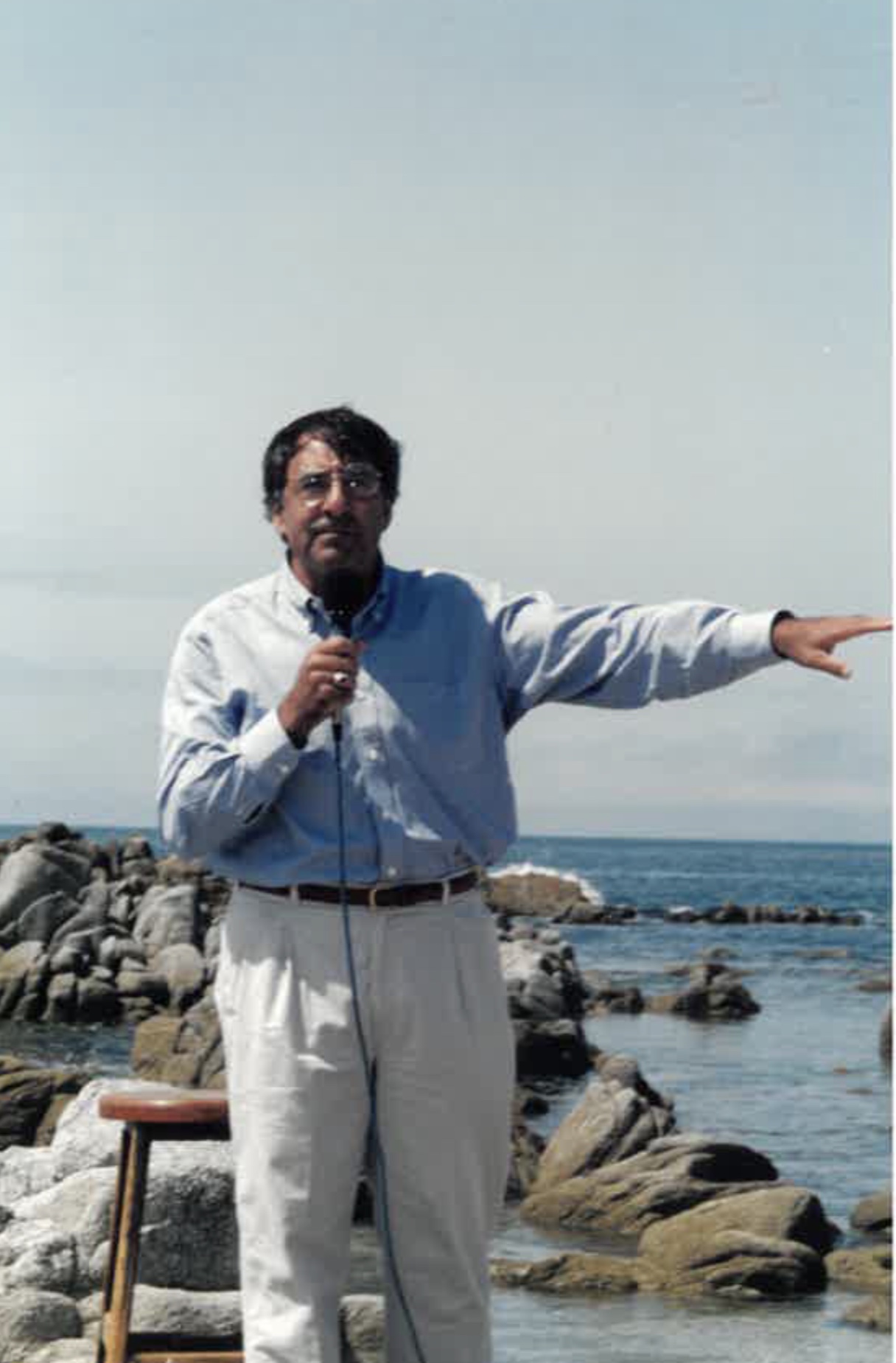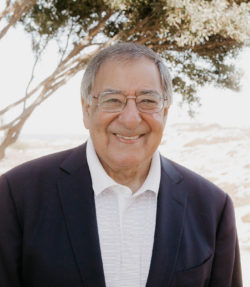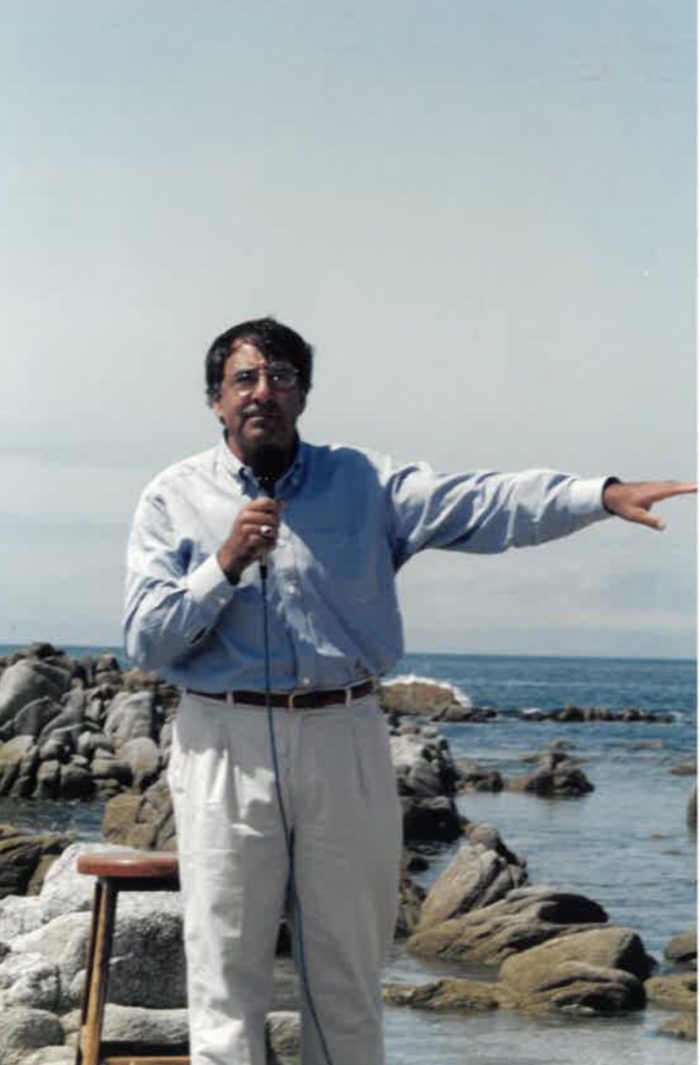
Sanctuary 30th Anniversary Series – Blog #11 “Finding sanctuary: The fight to establish permanent protection for Monterey Bay” by Secretary Leon Panetta
As effective as the fight was to establish an annual “moratorium” on offshore drilling, it was clear to most of us who were part of that fight that it was no replacement for permanent protection of Monterey Bay. What was needed was the kind of permanent protection that would not only stop the threat of oil drilling, but would support policies that would sustain fisheries, protect wildlife, enhance our coastline and ensure the beauty of the bay. But how was this to be achieved?
Options for protection
In the mid-1980s, the community groups that had fought the fight for the “moratorium” began to discuss options for permanent protection for Monterey Bay. One approach was a permanent prohibition on offshore drilling off the Central Coast. But there was no precedent for passing that kind of exception and it was sure to be strongly opposed by oil interests. The other possibility was to look at a marine protected area under state law that would prohibit oil drilling. But it would be limited to the area within state jurisdiction. It was clear we would have to consider federal protection.
The designation of a marine sanctuary was in federal law but was only done administratively by the National Oceanic and Atmospheric Administration (NOAA) in the commerce department. Indeed, in 1977 NOAA had identified ten marine areas as possible sanctuaries including Monterey Bay, but set Monterey aside. Nothing however, prevented legislation from being introduced to designate a marine sanctuary other than the fact that it had never happened before. It made sense to test the possibility.
Legislation to establish sanctuary
After discussing the idea with Chairman Bill Hughes of New Jersey whose subcommittee had oversight of the sanctuary process, he encouraged me to draft a bill that would create the Monterey Bay National Marine Sanctuary. The key he said was to present to his subcommittee the scientific evidence that would justify the sanctuary designation.
Prior to moving the bill, however, it was important to make certain that there was broad community support for the permanent designation. I assured fishermen that any new designation would help sustainable fishing. Farmers had the same concerns but believed that the sanctuary designation could help protect coastal farmland. The tourism and hospitality industry were strong supporters. While some involved in recreational activities were concerned, they agreed that the designation would attract more people to recreation.
Researchers, conservationists, marine scientists, the aquarium were all supportive because the sanctuary would enhance their work and studies. In a word, the broad community of the Central Coast came together as did the political leadership at every level, to form a strong coalition that supported the establishment of the marine sanctuary.
Legislative creativity
The bill passed in the House with large bipartisan support. However, it was clear that the Bush administration was opposed to the designation and that could mean not only trouble on the Senate side, but a possible veto by the president. Working with both California senators, the decision was made to attach the bill to a vehicle that the president would find hard to veto.
The 1992 Hurricane Andrew supplemental provided disaster assistance to the victims of Hurricane Andrew and was considered urgently needed relief. It was a must pass bill that the president would not veto. The Monterey Sanctuary designation was included in the disaster assistance bill and it passed both the Senate and the House and the president signed the bill. It was democracy at its best in protection of a natural treasure.
Setting boundaries
The next step involved the administrative process to establish the regulations and boundaries for the new marine sanctuary. Although there were many that wanted the boundaries to extend the length of California, the final decision provided a boundary that stretched from San Simeon to the Farallon Islands. Those boundaries established the largest marine sanctuary in the United States. The new regulations included a citizen council that would represent the community in the work of the sanctuary and specifically prohibited any offshore drilling within the newly designated sanctuary.
Final designation
The Commerce Department approved the designation and the boundaries in September of 1993. Celebrations were held both in Santa Cruz and Monterey. The fight to permanently protect Monterey Bay had succeeded because the Central Coast was unified and pulled together to protect a natural treasure for future generations.
The foundation
In recent years, federal funding has been less predictable making it difficult for the Sanctuary staff to be able to fully implement the programs critical to protecting Monterey Bay. For that reason, Hilary Bryant, Fred Keeley, Dan Haifley, Ted Balestreri, Nova Covington, Gordon Eubanks, Sam Farr, Yvette Lopez Brooks, Martine Watkins, Christina Sandera, Lisa Wooninck, Kris Sarri and I worked together to make the Monterey Bay National Marine Sanctuary Foundation a reality. Our director is Ginaia Kelly and our goal is to again recruit the entire central coast community to providing the funds and support essential to Sanctuary activities.
We celebrate the 30th anniversary of Monterey Bay National Marine Sanctuary. But, the work of the sanctuary is not over. There will be future threats from climate change, coastal development, threats to fisheries and wetlands, pollution and energy needs.
But the community set an example for future generations that with dedication, commitment, patience, and the will to never stop fighting, the Monterey Bay National Marine Sanctuary is today a living tribute and legacy to the outstanding stewardship of our entire community.
 Leon E. Panetta is Co-Chair of the Monterey Bay National Marine Sanctuary Foundation Board of Directors. He founded the Panetta Institute at Cal State Monterey Bay. He served as U.S. secretary of Defense, director of the CIA, White House chief of staff, director of the Office of Management and Budget, and as a member of Congress from California’s Central Coast for 16 years. For more on the sanctuary’s 30th anniversary, go to montereybayfoundation.org.
Leon E. Panetta is Co-Chair of the Monterey Bay National Marine Sanctuary Foundation Board of Directors. He founded the Panetta Institute at Cal State Monterey Bay. He served as U.S. secretary of Defense, director of the CIA, White House chief of staff, director of the Office of Management and Budget, and as a member of Congress from California’s Central Coast for 16 years. For more on the sanctuary’s 30th anniversary, go to montereybayfoundation.org.
About this series
Monterey Bay National Marine Sanctuary is celebrating its 30th anniversary, and the national sanctuary system its 50th anniversary. In recognition of these milestones, the Sentinel has been publishing columns by former U.S. Secretary of Defense Leon Panetta, former U.S. Rep. Sam Farr, former Save Our Shores Director Dan Haifley, and former California Assemblymember Fred Keeley, who serve on the board of Monterey Bay National Marine Sanctuary Foundation and were involved with the sanctuary’s designation, as well as Sanctuary Superintendent Dr. Lisa Wooninck. For information, visit montereybayfoundation.org or montereybay.noaa.gov.

